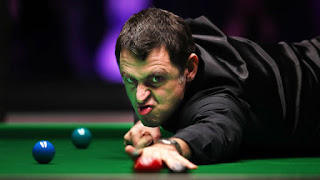The Light of Leicester Square
In the early days of snooker history when the sport was a game and not well recognised beyond closed doors, billiards and snooker had a home in central London. Thurston’s Hall or the Leicester Square Hall as it became known after it was bombed during World War Two From its opening in 1901 until closure in 1955, The largest of all the venues, the hall could seat approximately 250 people and was the Crucible of its day, hosting 12 World Championship finals between 1930 and 1953.
All the greats came here to play including Joe and Fred Davis and Ted Lowe first got involved in snooker here. Players such as Jackie Rea, Walter Donaldson and Sidney Smith, no longer well recognised names, all competed in this hive of cue activity and despite much of the equipment and fittings being destroyed by a bomb blast, the hall rose from the ashes and was rebuilt. Snooker was s hybrid at this time, a combination with billiards and was not seen as a major game, classed instead as a pastime that was largely played as a gentleman’s game played in smoke filled clubs. The working class used such events as a means of release from the working week, so the likes of the Davis brothers were just what they needed to make their evenings and weekends slightly easier.
If you thought the Crucible was compact and confined, this hall was smaller. The audience were seated very close to the table and matches went on for days. These players were true winners because a final could last a week and the prize money and recognition was low. Players at this time played for pride and to showcase their skills and not for remuneration. The few professionals at this time played a multitude of exhibitions and tournaments, some with very few watching due to confined space and they often had to sit on the stairs as no chairs were provided. The referee used to shout out the score and beer and cigarettes flowed as they played.
By the time the hall closed in 1955, snooker was still in its infancy and next moved to venues such as Blackpool and the Northern Snooker Centre In Leeds. It wasn’t until 1969 when Ted Lowe in conjunction with BBC2, moved snooker to the Pot Black format that colour television put snooker on the sporting map. However Thurston’s Hall and later Leicester Square Hall played their part in snooker history and developed the love of a game into a mainstream sport.
https://youtu.be/dBw6b8xjt_E
All the greats came here to play including Joe and Fred Davis and Ted Lowe first got involved in snooker here. Players such as Jackie Rea, Walter Donaldson and Sidney Smith, no longer well recognised names, all competed in this hive of cue activity and despite much of the equipment and fittings being destroyed by a bomb blast, the hall rose from the ashes and was rebuilt. Snooker was s hybrid at this time, a combination with billiards and was not seen as a major game, classed instead as a pastime that was largely played as a gentleman’s game played in smoke filled clubs. The working class used such events as a means of release from the working week, so the likes of the Davis brothers were just what they needed to make their evenings and weekends slightly easier.
If you thought the Crucible was compact and confined, this hall was smaller. The audience were seated very close to the table and matches went on for days. These players were true winners because a final could last a week and the prize money and recognition was low. Players at this time played for pride and to showcase their skills and not for remuneration. The few professionals at this time played a multitude of exhibitions and tournaments, some with very few watching due to confined space and they often had to sit on the stairs as no chairs were provided. The referee used to shout out the score and beer and cigarettes flowed as they played.
By the time the hall closed in 1955, snooker was still in its infancy and next moved to venues such as Blackpool and the Northern Snooker Centre In Leeds. It wasn’t until 1969 when Ted Lowe in conjunction with BBC2, moved snooker to the Pot Black format that colour television put snooker on the sporting map. However Thurston’s Hall and later Leicester Square Hall played their part in snooker history and developed the love of a game into a mainstream sport.
https://youtu.be/dBw6b8xjt_E




Comments
Post a Comment